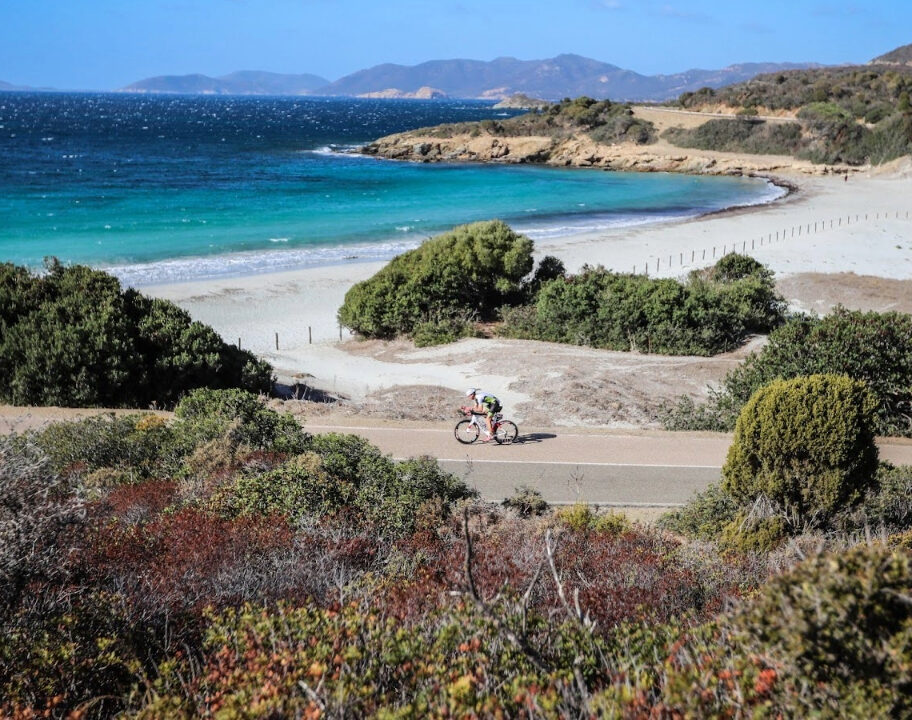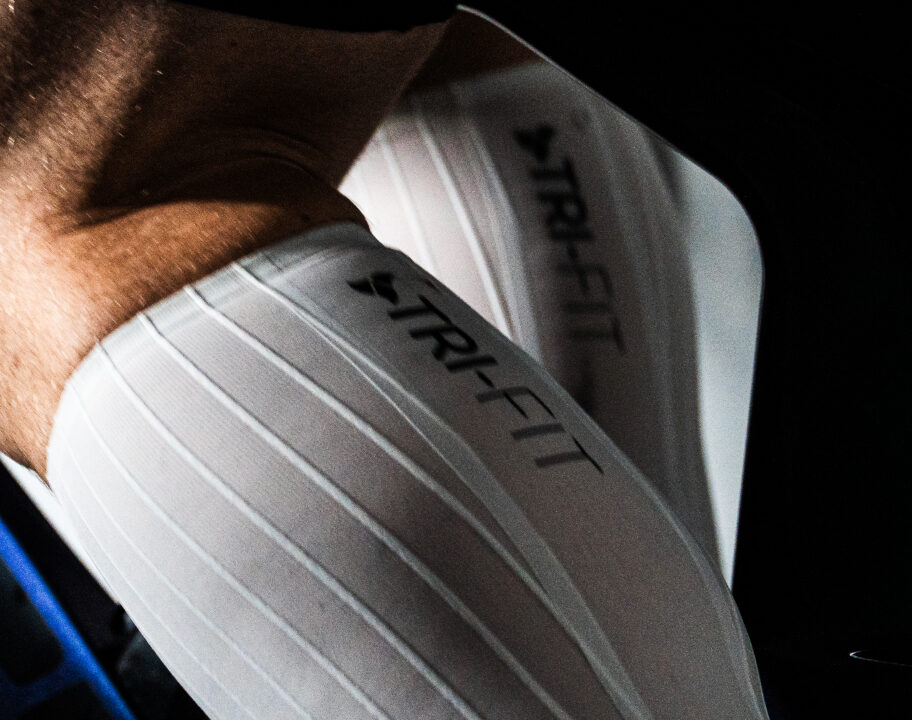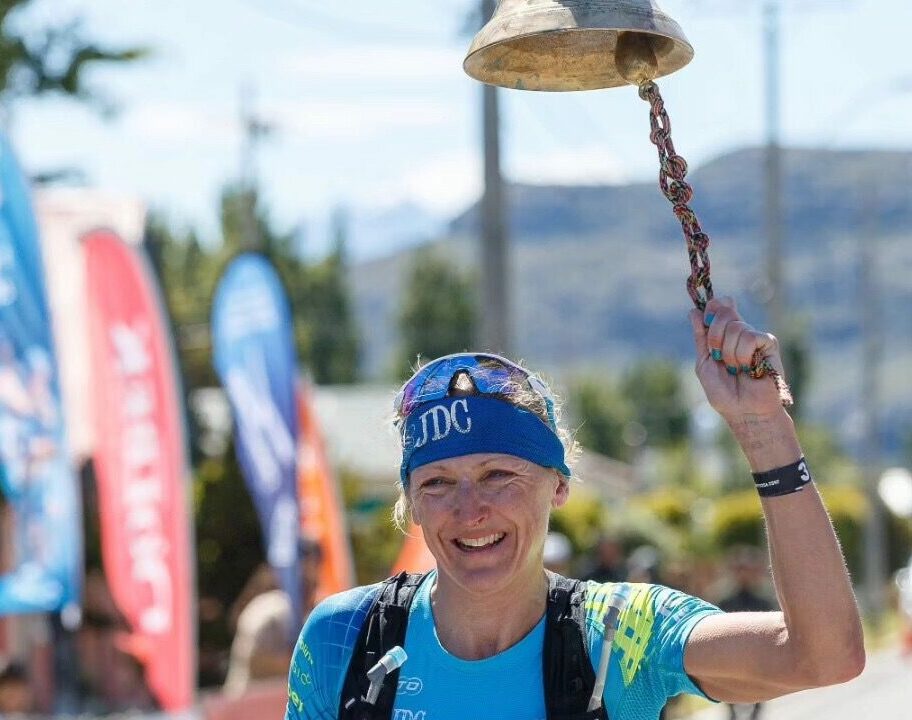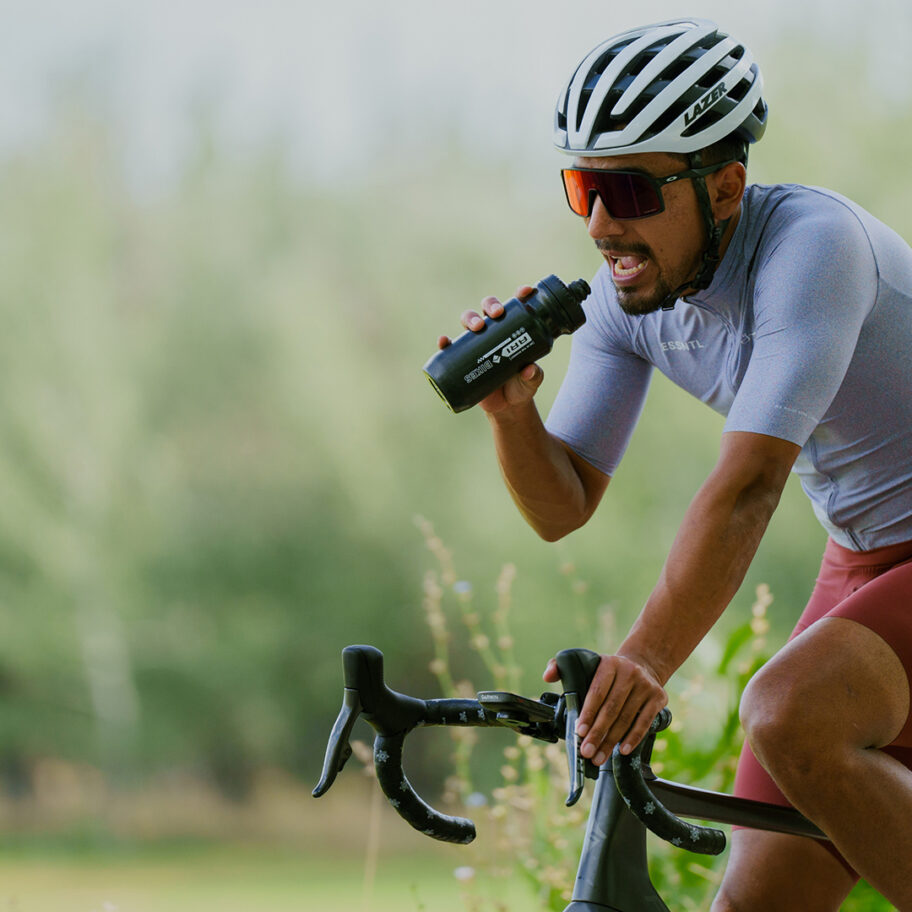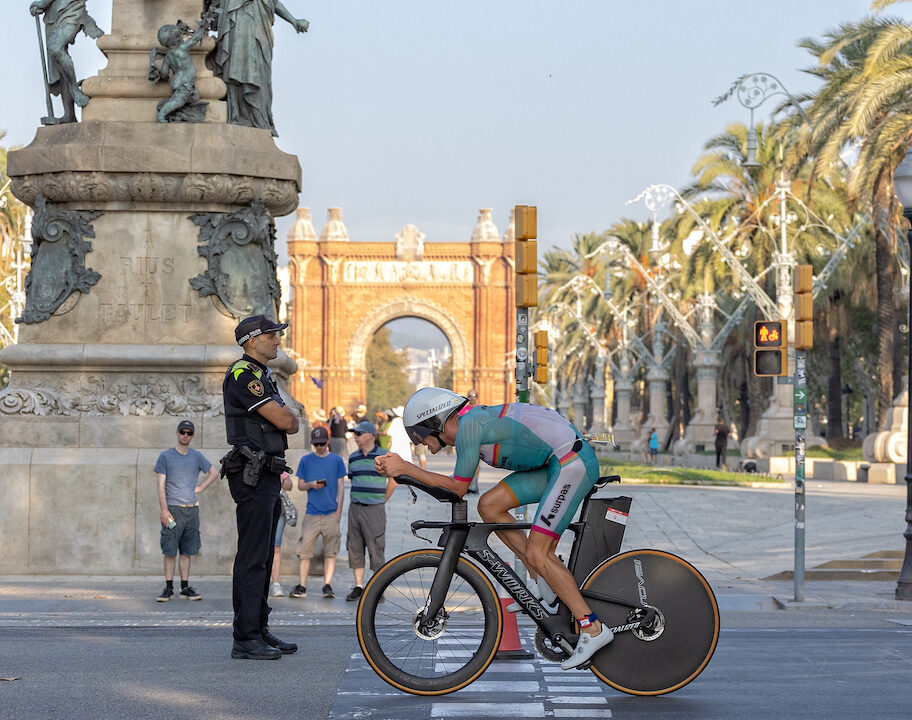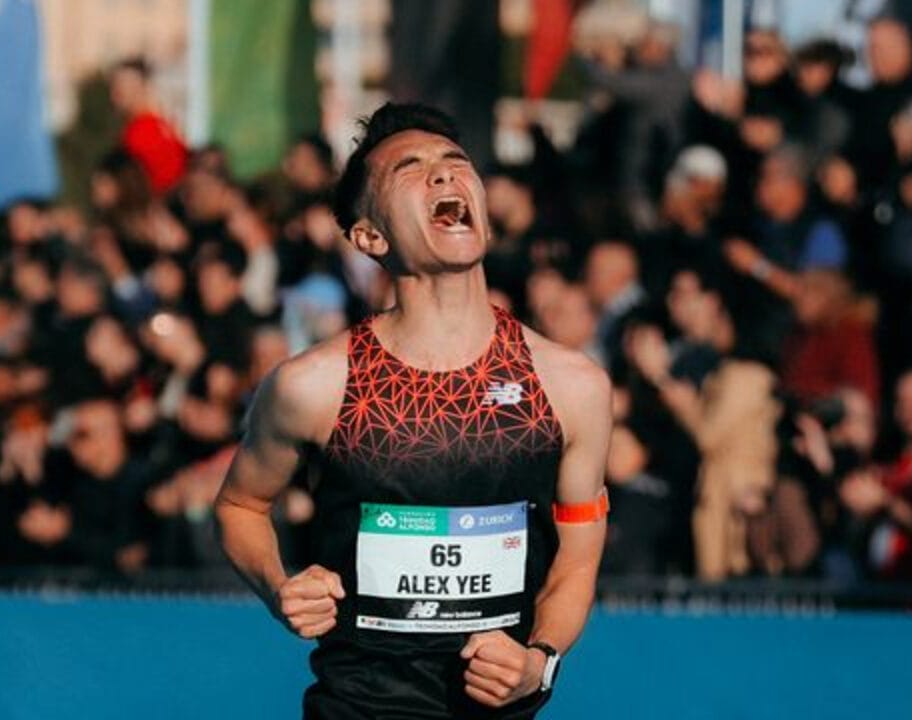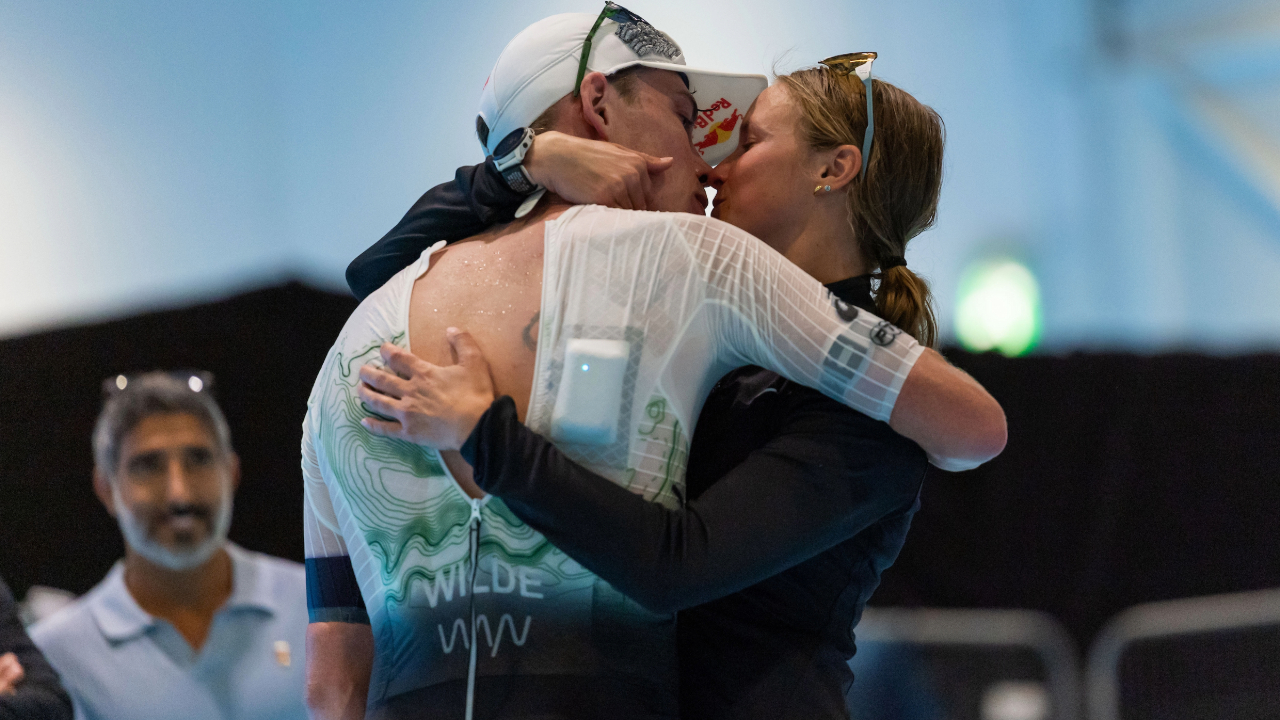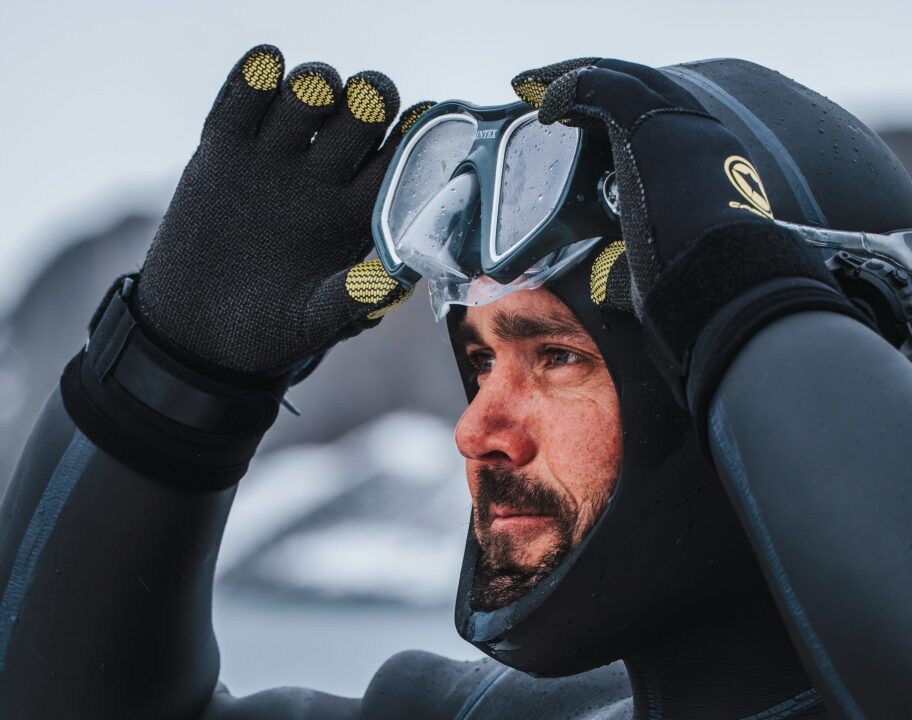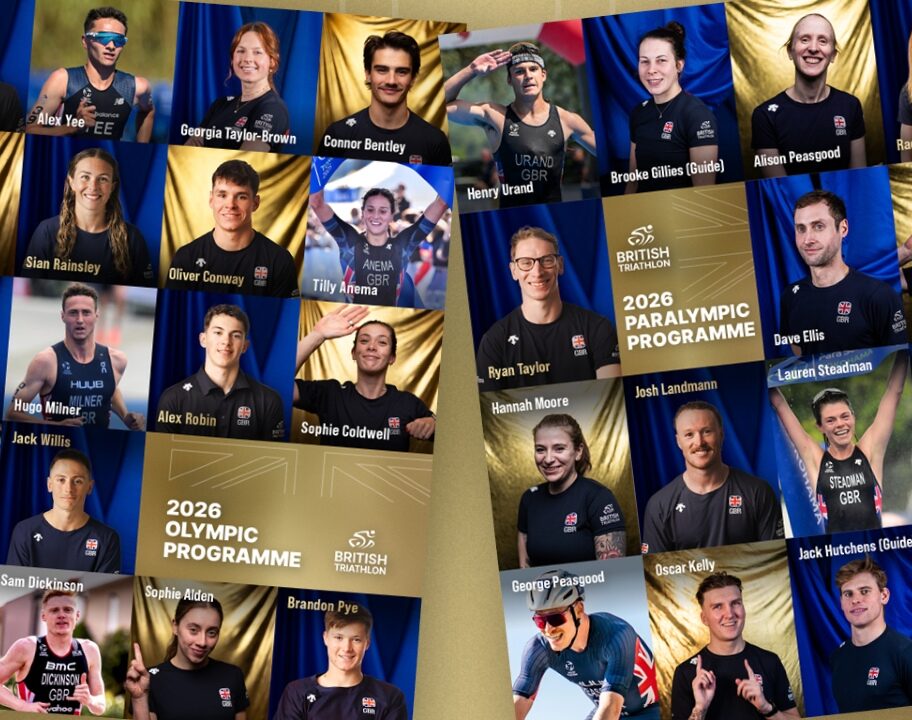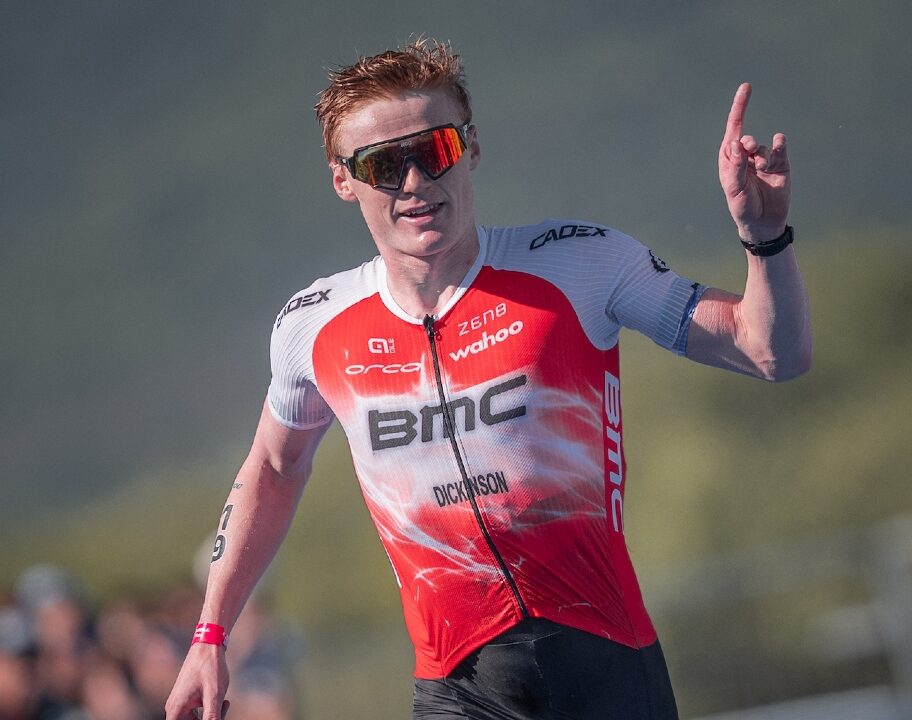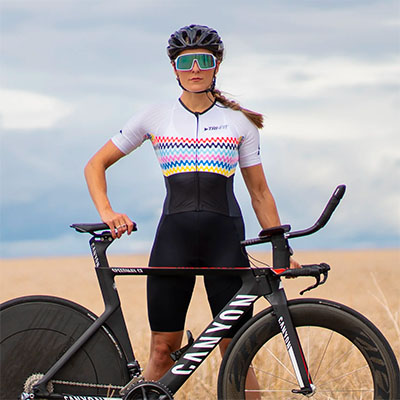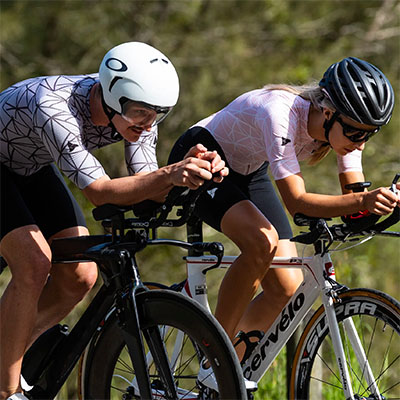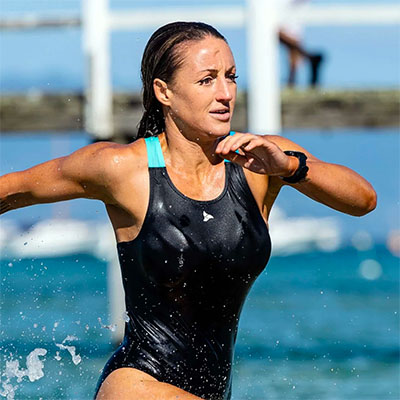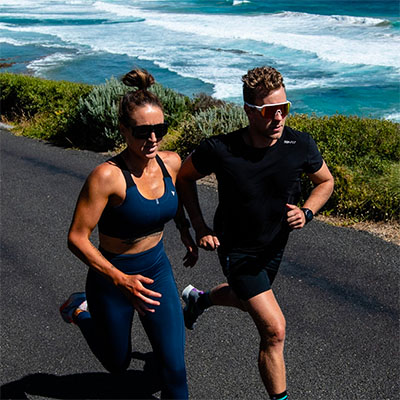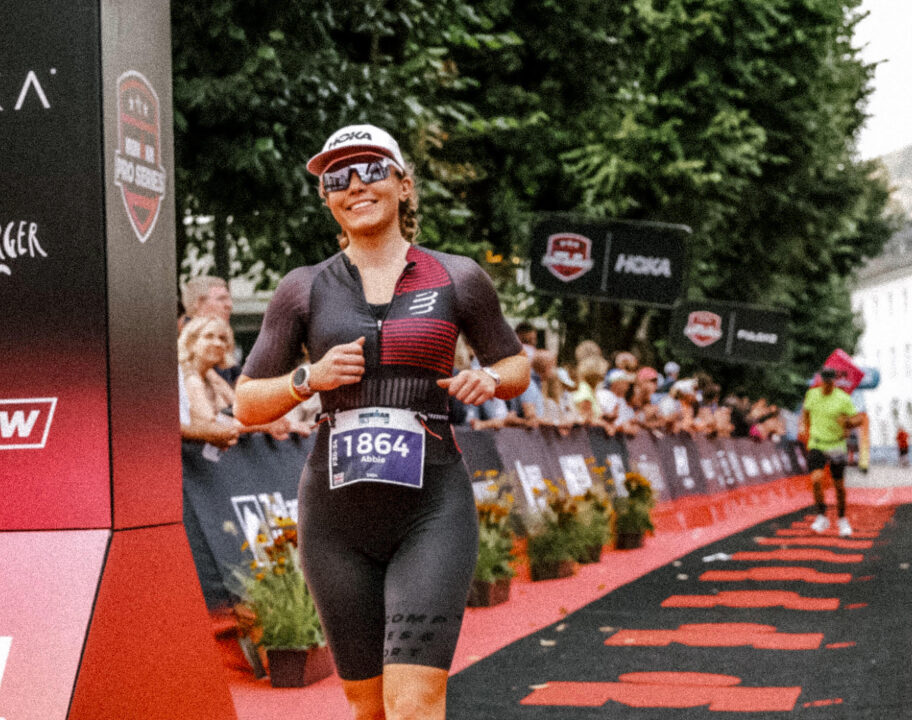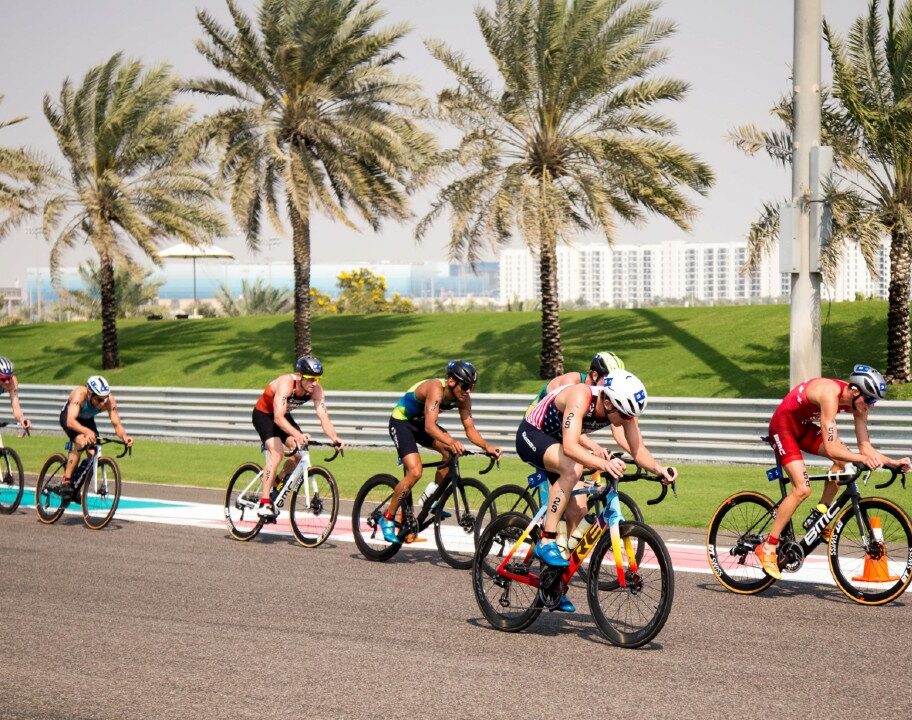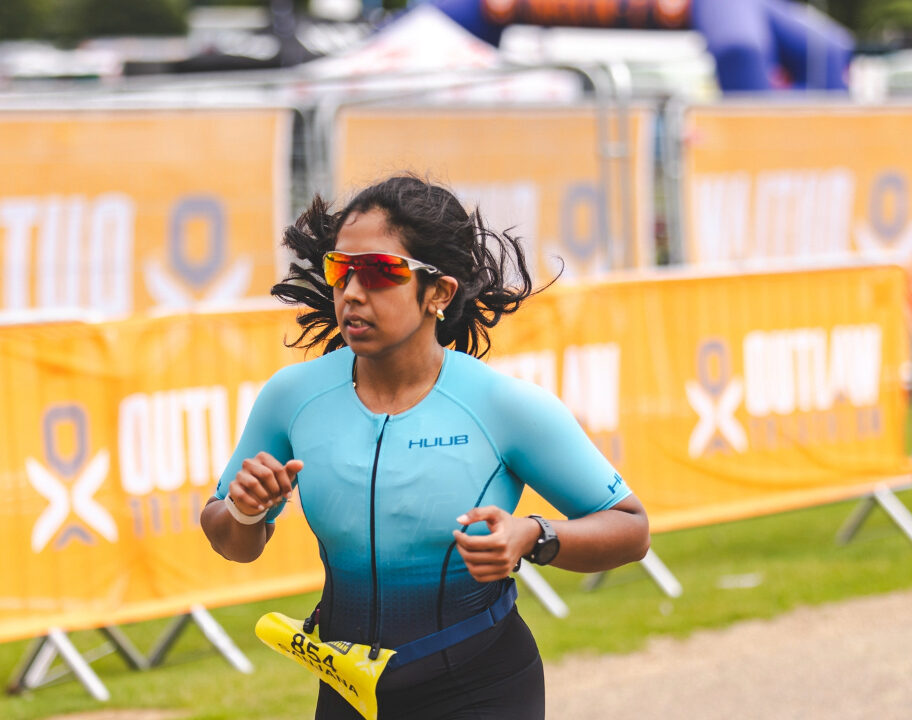Cadomotus have disrupted the status quo when it comes to triathlon cycling shoes with their Chronos Aero triathlon shoe. Bringing across expertise from the world of speed skating, the Chrono Aero shoe promises huge gains in power transfer and aero watt savings, without compromising on speedy transitions.
And not only is the design different to any other triathlon cycling shoe on the market right now (at least that I’ve seen!). You can also custom fit the shoes at home – by putting them in the oven!
Given that I’ve been racing in the same old pair of budget tri shoes that I bought before my first Ironman back in 2018. It’s safe to say I’ve not put too much thought into how my choice of cycling shoes could be impacting my race day performances. So I was interested to learn more about these cycling shoes from Cadomotus and to see if upgrading my footwear really would make such a big difference.
What makes the Cadomotus Chronos Aero triathlon shoe different?
As I’ve mentioned, the Cadomotus Chronos Aero shoes are pretty unique on the tri shoe scene. So before I dive into my honest experience of testing out these shoes in training. Let’s quickly run through the key features – and the potential benefits.
Aerodynamic design
Many of us – myself included – will have plenty of aero gear for race day. TT helmet, aero tri suit, calf sleeves, disc wheels/covers and even aerodynamic water bottles. But something we tend not to think about in a triathlon is the aerodynamics of our shoes. Which might sound like such a minor detail – but when you look at time trial cyclists with their full shoe covers, it does make sense that tri shoe designs could actually be quite a hindrance to our CdA scores!
So on the Cadomotus Chronos Aero shoes, gone is the single velcro strap and wide open upper you’ll find on most tri shoes. Instead you’ve got a twist-dial fastening, hidden under a zip-up aero cover. I’ve taken a deep dive into what this means from an aero perspective here. But essentially by removing the wide opening and creating a smooth surface – air can flow far more efficiently over the top of the shoe so you’re reducing drag. Cadomotus’ own testing has shown up to a 10 watt saving here. And even at the lower end of the scale (~3w), over an Ironman distance bike leg that adds up to a pretty decent time saving!
Stiff carbon shell design
Aero features aside, the other key point of difference is the construction of the shoe. This is where the speed skating influence comes in – a sport where athletes are travelling at break-neck speed on a toothpick thin blade, meaning any unwanted flex or movement in the shoe can be disastrous. The Chronos shoes have a stiff, carbon shell which not only supports the sole of your foot but also ‘cups’ your heel and offers lateral support.
An ultra-stiff shoe sounds pretty uncomfortable though, right? What’s interesting is that these shoes have been designed to be ‘baked’ in the oven, so you can custom mould them to your feet. I’ll talk you through what this process was like and how to do it later on in this review.
The idea behind this stiff but customisable carbon shell is that it enables you to have the most efficient power transfer between your legs and the pedals. And it stabilises the foot, taking pressure off the calves which in theory should leave you a little fresher for the run.
Note: When you purchase through some links on our site, we may earn a small affiliate commission
Key features overview
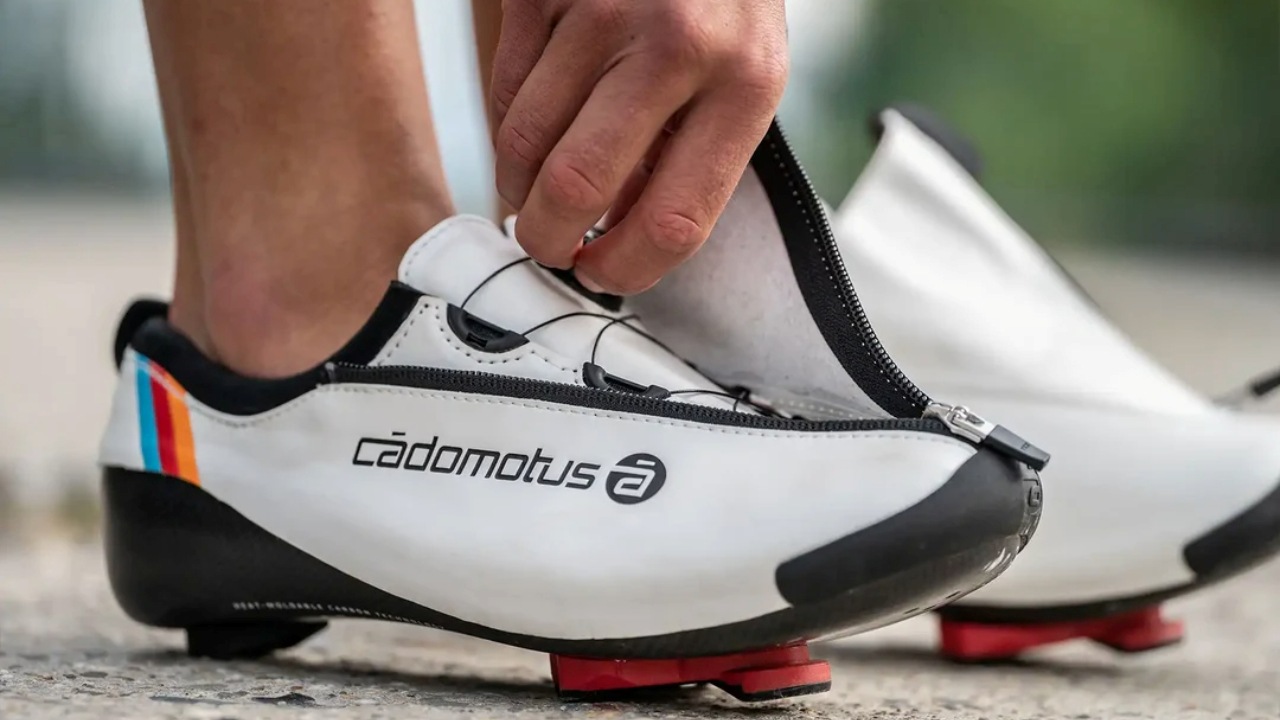
| Stiff carbon shell | ‘Freelock’ twist dial fastening |
| Aero cover with low drag YKK zipper | Heel and lateral foot support |
| Up to 10 watt saving | Improved power transfer, even when unfastened |
| Customisable fit through heat moulding | RRP €395,87 / £337 /$459 |
HOW i TESTED the cadomotus chronos aero triathlon cycling shoes
I’ve been testing these shoes out for over a month now, covering higher intensity sessions on the turbo with plenty of threshold and VO2 max efforts (the kind that make you want to throw things at your coach’s head and/or quit triathlon to take up a more civilised, less sweaty pass time) to test the power transfer. Plus my longer steady weekend rides to get a feel for comfort and efficiency.
The TL;DR Summary
If you want the full low down on everything from sizing and the heat moulding process to how these shoes have performed in different conditions – you can get all that below. But if you’re just here for the verdict: soup’s up!
I came in a little sceptical as to whether I’d really notice a major difference with these shoes. But after a few compare and contrast stints on the turbo with my previous shoes, I wish I’d made the switch sooner. Your feet feel locked in and pushing power feels easier. The heat moulded custom fit means that there aren’t any uncomfortable pressure points. And you don’t need to do the shoes up really tight to feel secure – ideal for long distance racing.
My main concern was whether the aero design would lead to overheating. Racing in Kona in October will be the proof in the pudding, but so far these shoes have been absolutley fine for me in a humid little heatwave here in the UK. I’ll caveat that with saying I am part lizard and usually run a bit cold.
One thing to note is that if you tend to do a push mount or a flying mount, you’re going to want to take the time to practice this in training and get the hang of it. The design makes it a little trickier, but by no means impossible.
best for…
Serious triathletes looking to take a ‘no stone unturned’ approach to optimising their performance and/or anyone who’s struggled to find triathlon shoes that are comfortable.
In depth review
So that’s the headlines. But now let’s take a deeper dive into what these triathlon cycling shoes are actually like to ride in – and what the process of ‘baking’ them to get a custom fit was like!
Keep reading, or watch my video review below where I met with the Cadomotus team to learn more about the tech behind the shoes and got my pair heat moulded.
Sizing and heat moulding process
First up let’s talk sizing. It’s really key that you take a close look at the size guide on the Cadomotus website, because it’s highly likely you won’t take your usual street shoe size. I’m usually an EU38 but for these I needed an EU39 (mainly thanks to my freakishly long second toes). Cadomotus are regularly at the expos of a lot of the major triathlon events, particularly Challenge Family races. So if you get the chance, I’d recommend going to visit them in person as they can help you with measuring your feet and the heat moulding process. If not, there’s plenty of details on the website to guide you.
That brings us nicely onto a quirk of these shoes – you can bake them! That might sound a little scary when you’ve just invested a not insignificant chunk of your new bike fund on a pair of shoes. But the process is quite straight forward. You can check out the video below for home heat moulding instructions . Take note of the 80 degrees Celsius / 175 degrees Fahrenheit heat limit. You’re not going to want to throw these in the oven with that night’s lasagne.
Getting my shoes heat moulded at the Cadomotus expo booth
I actually ended up visiting the team at Cadomotus at the Challenge The Championship expo, and took the chance to get my shoes heat moulded. First, I tried the shoes on and identified any areas where they were creating pressure. For me this was mainly around the bony prominence of my ankle. The team placed some tape on these areas on my feet, and then popped my new shoes in the little oven they had with them.
Once my shoes were ‘cooked’ I put them on while they were still warm and malleable and the small bundles of tape on my feet helped to create a bit of extra space where I had pressure points before. I stood slightly on tip toe for a few minutes while the shoes set to get the space I needed around the toes. And simple as that – one pair of custom moulded cycling shoes, ready to rock and roll.
First impressions
My previous triathlon cycling shoes have been trotting around the world racing with me since 2018. They’ve seen me through 5 full Ironman races (technically 7 Ironman training cycles thanks to 1 x Covid cancellation and 1 x medical tent DNF disaster) and several middle distances. They’re also my designated indoor training shoes. Which means they’ve done serious miles.
All that being said, I had custom insoles created during a bike fit with Matt Bottrill. So I wasn’t really expecting to notice that much of a difference with the carbon shell of the Cadomotus shoes. I was wrong!
The Cadomotus shoes give a far more locked in feel, even if you haven’t done them up particularly tightly. It instantly felt like a better connection to my pedals. And having done a few ‘compare and contrasts’ on the turbo trainer with my old shoes during some of my (horrible) VO2 max sessions recently, the difference is noticeable. When pushing higher power, I’d often resort to doing my old shoes up so tightly I’d get pins and needles to feel like my feet were locked in. Comparatively, I can have the Cadomotus shoes done up to a comfortable tightness, and have way less slipping around.
So first impressions – the power transfer felt great, and the stiff carbon shell was surprisingly comfortable. But my main concern was whether that stiffness would start to feel harsh during longer rides, and if the aero design would cause hot feet.
Comfort and performance
My main race this year is Kona, so the proper long rides are yet to come. But so far on rides around the 3 hour mark, the Cadomotus Chronos Aero triathlon cycling shoes have been comfortable from start to finish. I’ve not had any hot spots or pressure points, and so far they also seem to have resolved an issue with numb toes I used to get in my old shoes. Out on the road when you’ve got twists, turns and out of the saddle stints – these shoes have given a general feeling of being better connected with the bike.
How are they in the heat?
With that zip-up aero cover, the Cadomotus Chronos Aero shoes are naturally going to offer less ventilation than your typical tri shoe. You have got drainage holes in the bottom though, which is good for rainy conditions.
Obviously I’m not going to get Kona conditions here in the UK. But we have had a heatwave recently, with temperatures in the mid- to high 20s (Celsius) and some decent humidity. So far, I haven’t noticed my feet getting particularly hot, and because the shoes fit in a way that you’re perfectly locked in without having to fasten them super tightly. I’ve found I do have some wiggle room to accommodate any heat-related feet swelling. They’re also pretty easy to adjust on the go so if you do need to loosen them off, you’d be able to do so without stopping. But the heat factor is something you’ll need to consider if you tend to run hot.
Practice your mounts
One thing I would say is the design of these shoes means if you plan to leave them clipped to your pedals and do a flying mount or a push mount, you’ll want to practice it plenty of times in training to make sure you’re happy you can get your feet in. With the dial fastening and aero cover, the top surface of the shoe doesn’t give as much when you stand on it if you’re doing a push mount. And because the shoe is designed to it snugly around your foot, you can’t slip your foot in quite as easily as the wide open classic tri shoe designs. But it’s by no means impossible, and you’ve got additional loops on the outside of the shoes to help keep them horizontal on the pedal.
Once you get the hang of it, you’ll be able to breeze through transition and mount your bike as normal.
Verdict
When it comes to our race day kit, cycling shoes can be a bit of an after thought. But given they’re the point of contact between us and our bike, we probably should be considering them. It’d be a bit like getting the most aero bike possible, and then putting on cheap knobbly tyres and giving yourself unneccesary rolling resistance to deal with. If you’re already ticking all the other boxes on the aero gains front, why leave your shoes out of the equation?
Potential CdA savings aside, the stiffness of these shoes makes it feel easier to push power efficiently. The custom fit has you feeling locked in, but not uncomfortable. And I’m pretty sure when I hit the bike course in Kona this year and I’m battling the headwind up to Hawi, I’ll be glad to know I’ve done everything I can to reduce the impact of the wind when it inevitably grinds me down!
So are the Cadomotus Chronos Aero shoes worth it? If you’re serious about getting every bit of performance possible, you’re nailing your training and you’ve ticked every other box when it comes to your aero race day set up. Switching your shoes feels like the next piece of the puzzle. I also think if you’re someone who’s really struggled to find cycling shoes that are comfortable, the fact you can mould these to your exact foot shape could really be a game-changer.


